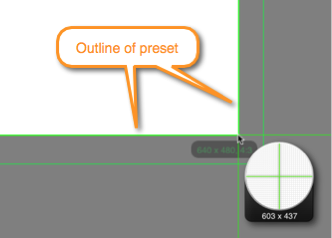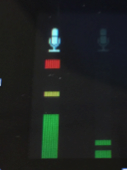Camtasia is software used to record onscreen activity, audio and web cam video and narrate existing PowerPoint presentations. Through Camtasia, you can record, edit, produce and share course content.
Tips before start your Camtasia project:
- Clean up desktop
- Write a script or outline
- Do a practice run through
To record:
- Launch Camtasia
- Close existing project or go to File > New Project
- Hit the Record button located on the middle toolbar
- The following window pops up:
Select recording region:- By default, Camtasia records the entire screen of your main monitor. Choose this option when your recording content includes:
A large or full-screen application or web browser.
Multiple applications or web browser windows.
Action that spans across the entire screen including the dock, application menus, etc
- You can also record a custom region. Record a region of the screen when:
You only want to show a specific window or region of the screen, no extra content.
You need to record at specific dimensions.
You want to record at dimensions larger or smaller than one of Camtasia's presets, but still maintain the same aspect ratio of the preset.
- Record using a preset when you want to share to a destination that requires specific dimensions such as YouTube, iPhone, or to embed on a website.
- To access custom region or preset region, click on the triangle to the right and choose your desired region from the drop-down menu:
- To set your own custom region, choose Custom Region, crosshairs appear .
- To select an area, click and drag on the screen. As you drag the cursor near a preset, an outline of the preset appears.
- To select a window, move the cursor over the window until a green border appears around the window. Click within the window to select that area.
You cannot access any applications or system settings while in the selection mode. Make sure to edit the audio settings, application or window position, and other system settings before selecting the area to record.
To cancel selection, click on back arrow or press Esc to edit these items .
- By default, Camtasia records the entire screen of your main monitor. Choose this option when your recording content includes:
- Select camera option: if you want to use the built-in iSight camera to record youself, click on Camera to turn in on. A preview of the camera appears.
- Select audio:
- From the Audio menu, be sure to select Duet USB NOT built-in microphone, as you want to record with the desktop microphones with Duet audio interface.
- To adjust the audio input level, speak to the mic at the level you are wishing to record at; Observe the audio meter on the Duet Apogee interface; Press down the wheel repeatly to toggle between different 2 inputs, headphone and speaker level; adjust the Mic input level (either Input 1 or Input 2 depending on which desktop microphone you use) by turning the wheel clockwise to increase or counter-clockwise to decrease; Make sure the bar only goes up about ¾ of the way. If it touches the red square, your mic volume is too high. The input levels should barely be into the yellow part of the bar.
- From the Audio menu, be sure to select Duet USB NOT built-in microphone, as you want to record with the desktop microphones with Duet audio interface.
- System audio: when enabled, this will record anything that comes out of your speakers or headphones - whatever you play with iTune, etc.
- Click on red Record button to start recording . Record window will hide, and you will see a count down dialog. When the dialog is gone, the record will start, and you can begin your demo.
To Pause or Stop Recording: go to the upper right corner and click on red filmstrip icon and choose either Stop Recording or Pause Recording or use the keyboard shortcut OPTION + COMMAND + 2 to stop or SHIFT + COMMAND + 2 to pause.






